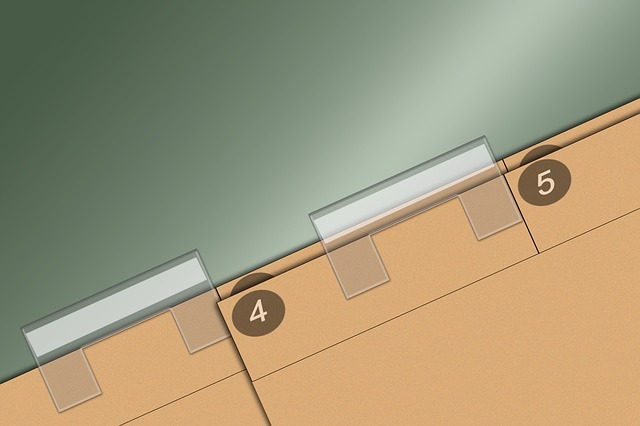- Attorney Appointment (916) 704-3009
How To Obtain California Divorce Papers And Start The Process?

Acquiring divorce papers and initiating the divorce petition may seem daunting, but with the right guidance, it can be efficiently navigated. Understanding the legal requirements and steps involved is crucial for a smooth transition. In this comprehensive guide, we will break down the essential information on how to obtain the necessary documentation and kickstart the divorce process in the state of California. Whether you are considering divorce or have already made the decision, this step-by-step breakdown will provide clarity and guidance throughout the entire process.
Key Takeaways:
- Understanding the Process: It is important to familiarize yourself with the divorce process in California to ensure you meet all legal requirements and procedures.
- Obtaining Divorce Papers: You can obtain divorce papers by downloading them from the court website, purchasing them from a legal bookstore, or getting them from the county courthouse where you plan to file for divorce.
- Filing the Papers: After completing the necessary forms, you must file them with the court and pay a filing fee. This officially starts the divorce process in California.
- Serving the Papers: Once the papers are filed, they must be served to your spouse. To serve divorce papers, you can use an adult unconnected to the case, hire a professional process server, ask the county sheriff to serve, or use the U.S. Postal Service to mail the documents to your spouse.
- Legal Assistance: While you can file for divorce without an attorney, seeking legal assistance can help you navigate the process smoothly, especially if your divorce involves complex issues like child custody or property division.
Steps to Obtain Divorce Papers

Obviously, one of the first steps in starting the divorce process is obtaining the necessary paperwork. Without the proper forms, you cannot move forward with filing for divorce in California. This chapter will guide you through the crucial steps of obtaining divorce papers to begin your divorce proceedings. Individuals can visit the family law clerk’s office for assistance with obtaining and completing the necessary forms.
Determine the Type of Divorce Procedure

On initiating on the journey of obtaining divorce papers, it is essential to determine the type of divorce procedure that suits your situation. In California, couples can choose between a summary dissolution or a regular dissolution of marriage. If you and your spouse qualify for a summary dissolution, the process is simpler and faster. However, if your situation does not meet the requirements for a summary dissolution, you will need to proceed with a regular dissolution.
Retrieve the necessary forms based on the type of divorce procedure you have selected. It is crucial to ensure you have the correct paperwork to avoid any delays or complications in the divorce process. Engage in thorough research or consult with a legal professional to confirm you are obtaining the right forms for your specific divorce procedure.
Where and How to Retrieve the Necessary Forms

Retrieve the necessary forms from the court’s website or visit your local courthouse to obtain physical copies. The California courts provide access to divorce forms online, allowing individuals to download and print them from the comfort of their homes. Additionally, many courthouses offer self-help centers where you can pick up the required paperwork in person.
Necessary: Be mindful of the completeness and accuracy of the forms you retrieve. Any errors or missing information can lead to delays in the processing of your divorce. Take the time to carefully read through the instructions provided with the forms to ensure you fill them out correctly. Inaccurate or incomplete paperwork can significantly impact the timeline of your divorce proceedings.
How-To Complete Your Divorce Papers

Some individuals find completing divorce papers to be a straightforward process, while others may struggle with the complexity of the forms. To ensure a smooth and accurate completion of your divorce papers, follow these tips:
- Gather all necessary documents before you start.
- Read the instructions carefully.
- Double-check all information for accuracy.
- Seek legal advice if you are unsure about any part of the forms.
- Ensure all signatures are in the correct places.
- Accurately complete the income and expense declaration to provide a comprehensive account of financial information, including income, expenses, education, and employment.
Tips for Accurately Completing the Forms
1. Read instructions carefully: Take the time to thoroughly read through the instructions provided with the forms to understand the requirements.
- Double-check all information: Ensure that all personal information, such as names, addresses, and dates, are entered correctly to avoid delays in the processing of your divorce papers.
- Seek legal guidance: If you are unsure about how to fill out any section of the forms, consider consulting with a legal professional to avoid mistakes.
Assume that inaccurate or incomplete information could result in delays or rejection of your divorce papers.
Factors to Consider Before Submission
Any individual going through a divorce should carefully consider several key factors before submitting their divorce papers:
- Child custody arrangements: Determine the custody arrangements for any children involved in the divorce, including visitation schedules and child support.
- Asset division: Consider how assets and debts will be divided between you and your spouse, including any joint property or financial accounts.
Though these decisions may be challenging, it is crucial to address them before submitting your divorce papers to avoid potential conflicts in the future.
Completing
A thorough review of your completed divorce papers is essential before submission. Ensure that all sections are filled out accurately, and any required supporting documentation is attached to the forms.
- Legal implications: Understand the legal implications of the information you provide on the forms, as false statements could have serious consequences.
Thoroughly reviewing and accurately completing your divorce papers is crucial to starting the divorce process smoothly. Take the time to ensure all details are correct and seek guidance when needed to avoid complications later on.
Related Terms: Legal separation, California divorce process, no-fault divorce, court clerk, other spouse, domestic violence, uniform child custody jurisdiction, experienced divorce attorney, final divorce decree, divorce paperwork, family law clerk’s office, California family law, financial support, California law
Filing Your Divorce Papers

Despite the emotional turmoil that often accompanies the decision to get a divorce, understanding the process of filing your divorce papers is crucial to moving forward with the legal proceedings in California.
Where and How to File Your Divorce Papers and Pay the Filing Fee
Your divorce papers should be filed in the Superior Court in the county where either you or your spouse reside. The filing fee can vary depending on the county, so it’s important to check the court’s website for the most up-to-date information on the fees and any additional forms required.
When filing your divorce papers, it’s recommended to make at least two copies – one for yourself and one for your spouse. The original paperwork will need to be submitted to the court, along with any additional documents requested by the clerk.
What to Expect After Filing
Expect the court to provide you with a case number and assign a judge to your case after your divorce papers have been filed. You may also be required to attend a court hearing, depending on the complexity of your case and whether there are any unresolved issues between you and your spouse.
Your divorce proceedings are now officially underway, and you should be prepared to receive notifications from the court regarding the next steps in the process. It’s crucial to stay organized and keep track of all deadlines and requirements to ensure a smooth and successful divorce process.
Additional Considerations During the Divorce Process

Now that you have initiated the divorce process in California, there are several additional considerations you need to keep in mind to ensure a smooth and fair resolution.
Dealing with Child Custody and Visitation, Support, and Property Division
Support: When it comes to child custody and support arrangements, it is crucial to prioritize the best interests of the children. The court will consider various factors such as the children’s ages, their relationship with each parent, and the parents’ ability to provide for them. Additionally, spousal support may also be a consideration depending on the circumstances of the divorce. The enforcement act plays a role in legal procedures related to child custody and domestic violence restraining orders.
Property Division: California is a community property state, which means that assets and debts acquired during the marriage are typically split equally between the spouses. However, this division can be complex, particularly when it comes to high-value assets or businesses. It is essential to seek legal guidance to ensure a fair and equitable distribution of property.
Seeking Legal Advice and Mediation Services
Mediation: In cases where disputes arise during the divorce process, mediation can be a valuable tool to help both parties reach a mutually acceptable agreement. A neutral third party mediator can facilitate discussions and help find common ground on issues such as child custody, support, and property division.
Plus, seeking legal advice from a qualified attorney specializing in family law is highly recommended. An experienced lawyer can provide valuable insight into your rights and options, negotiate on your behalf, and ensure that your interests are protected throughout the divorce proceedings.
Summing up

Following this guide on how to obtain divorce papers and start the process in California will help you navigate through the initial steps of ending your marriage. By gathering the necessary forms, filling them out correctly, and serving your spouse, you can initiate the legal process smoothly. Remember to adhere to the state’s specific requirements and seek legal advice if needed to ensure a successful divorce proceeding.
Related Terms: entire divorce process, domestic partner, divorce case, domestic partnership, divorce law, uncontested divorce
FAQ

Q: What are divorce papers?
A: Divorce papers are legal documents that initiate the divorce process. They include forms such as the Petition for Dissolution of Marriage and Summons, which outline the details of the divorce proceedings.
Q: How can I obtain divorce papers in California?
A: In California, you can obtain divorce papers by visiting the county courthouse where you or your spouse resides. You can also download the necessary forms from the California Courts website or hire a legal professional to assist you.
Q: What information is required to complete divorce papers?
A: To complete divorce papers in California, you will need information about you, your spouse, your children (if any), your assets, debts, and any other relevant details regarding the marriage and separation.
Q: What is the process for filing divorce papers in California?
A: The process for filing divorce papers in California involves completing the necessary forms, submitting them to the court, serving a copy to your spouse, and attending court hearings as required. It is important to follow all the steps carefully to ensure a smooth process.
Q: How long does it take to finalize a divorce in California after filing the papers?
A: The time it takes to finalize a divorce in California after filing the papers can vary depending on various factors such as the complexity of the case, court backlog, and cooperation between the spouses. On average, it can take anywhere from six months to a year to complete the divorce process in California.
Related Terms: property declaration, divorce documents, California court system













